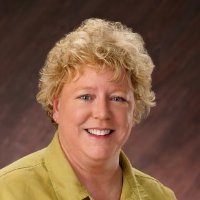I may be naïve and I may over simplify at times, but for the subject of the doctor-patient relationship (DPR), I don’t  think so. The DPR or practitioner patient relationship (PPR) is a relationship that I hold as sacrosanct – enacting a cone of silence to others as a sacred time where I witness a front row seat in a patient’s healing journey. Sounds cozy? Actually, I think that is the naïve part. The PPR is messy, difficult and fraught with land mines.
think so. The DPR or practitioner patient relationship (PPR) is a relationship that I hold as sacrosanct – enacting a cone of silence to others as a sacred time where I witness a front row seat in a patient’s healing journey. Sounds cozy? Actually, I think that is the naïve part. The PPR is messy, difficult and fraught with land mines.
Yes, idealistically, it is sacred, but many events and issues pull a its sanctity. Working daily with patients and staff can be a significant challenge. Some days it is smooth sailing, other days it just feels like “whack a mole.” I notice that in my 25-plus year career there are some things that still challenge me and there are areas where I continually want to grow as a physician and healer. Here are a few to ponder.
Land Mines in Trust
Many of my patients find me after visiting a long line of physicians. In their eyes, their perception is that these other physicians and providers have done little to nothing to help them as patients. I don’t believe this is true, while there can be bad experiences and even bad outcomes, the vast majority of providers are altruistic and compassionate in their care. But we are all aware of the patients that come to us with the perception that nothing is being done, “all tests being normal, and nobody is listening to me.” Essentially, the patient has a normal work up but still feels poorly. This is why they are seeking integrative, holistic, complimentary, alternative care.
That is us, so knowing that our cohort of patients are skewed in their perceptions about health care may be helpful to keep in the forefront of our thinking. It may help us check our own biases at the door and approach our patient care open minded and open hearted.
Nonetheless, patients see their bad experiences as a cairn in the path that seems to divert their journey. Bad experiences and outcomes occur because neither the provider nor the patient are perfect. We aren’t perfect, it is just that simple. Life is messy, communication is messy and medicine, integrative or traditional is just plain messy at times. I believe:
- We need to get comfortable with marginal outcomes, spontaneous healings and noncompliance;
- We need to not throw a supplement at every muscle test, or perceived change in the patient when they are seen in follow up;
- We need to step back, consider the whole patient by understanding genomics, functional medicine, mind body medicine; as well as our role in their care and as a member of their team of providers, and
- We need to be open to more communication and sharing of information thereby building community versus a competitive system.
Patients fear what providers will think of their choices, lifestyle, views, and other medical and holistic experiences. The literature shows that up to 80 percent of the time, patients are not telling the truth to their providers. Footnote … this could be in the form of non-disclosure, lying and false reporting. This is an astounding statistic. Up to 80 percent of the time, my patients are not telling me the truth and from my side of the PPR, I am open hearted, actively listening and holding space for their healing. This is a huge disrupter to the PPR, a therapeutic dissonance that will impede the patients’ progress. In some situations, it may even be unsafe.
These experiences left unprocessed can lead to frustration, exhaustion and even burn out as providers. Integrative medicine is not a panacea, we still are dealing with complex, imperfect people, systems of care and outcomes to treatment. It is not a linear path in healing, as we all are a complex being comprised of mind, body and spirit. Healing is accomplished in the soul. The spirit the body is a great teacher – a mirror and house for our experience here on earth. Learning how to cooperate with the body’s own inherent healing capacity is one of our life lessons.
To counteract these experiences, I practice a lot of self-compassion. I am encouraged frequently by Brene Brown’s work. She writes, “No matter what gets done and how much is left undone, I am enough. It is going to bed at night thinking, Yes, I am imperfect and vulnerable and sometimes afraid, but that doesn’t change the truth that I am also brave and worthy of love and belonging.”
Recently, while contemplating about a small subset of patients that needed to be discharged from my practice, I realized that I had done everything that I could do. Granted, I wasn’t perfect in my communication with these people, but the root issue was that they did not trust me (nor probably any other practitioner they might see). I could not rebuild that trust, and it continually impeded our ability to work together, despite having agreed upon treatment programs and return visits and follow-up protocols. We were at an impasse; I was exhausted, and these folks were actually very disruptive to our practice. Discussions and decisions had to be made.
This is a vulnerable topic to write about, because as providers, we think we usually have the answers, but also especially as holistic providers. We have done our work and are living our daily walk and talk, but we are not perfect. We are whole hearted, which means that we approach our day and patient care with courage, compassion and connection. I believe these are the tools needed to work our way through our journey.
Complexity
The chronic patient today is a much more complex patient. It is fair to say if you are seeking any kind of care, you are apt to be more complex than in years and decades past. This is a culture shift an anthroposophical shift in medicine. It is a true statement to say that we discharge patients’ home from the hospital sicker than what when we used to admit them to the intensive care unit (ICU) in the early and mid 1990’s.
The system is more complex. We used to pick up the phone (OK, our staff did), call another provider and have a quick discussion about whatever we needed to talk about in reference to the patient. Today, phone trees, EHR’s, siloed staff and large systems have made this nearly impossible. True story, I referred a patient to a specialist and there were some very important caveats to her care. While I outlined them in the referral request, I did not trust that the provider would see those notes prior to the consultation. Why? Because their EHR is different than mine. The EHR is a virtual filing system, much different that when we had the simplicity of paper and literally stuck the consultation at the front of the chart or better yet paperclipped to the front of the chart; not to be missed. So, in this case, I called five days before the visit to begin the telephone tag so I can speak to the other provider. Still waiting 3 days later. Will keep you posted.
Let’s take this one step further. If there is any rancor in the community between traditional and integrative, holistic providers, the system is further fragmented. Remember that up to 80% of the time patients do not tell the truth to their providers. Most often this is when patients don’t fully disclose who they are seeing, the supplements they are taking and treatments or other care they are receiving. This is very problematic in the PPR.
Another true story, in our clinic, when we see a new patient, we instruct them to bring a list of other providers, tests and records. This way, as we move forward, we have as much, if not all, the information needed to review, make decisions and provide care. Currently, greater than 70% of the time all that information is not brought forward to the clinic, we get only partial information. It can take a few visits for me to completely understand their story and history because of its complexity and because of under reporting from the patient.
I counteract this by showing up wholeheartedly, which means knowing in my being that I am worthy; I am enough; I am worthy of belonging in the conversation and worthy of leading the patient to the best of my ability (despite not being perfect). Then saying to the patient; “Hey, I know you are scared, I know this hasn’t been easy. But we are here today to discuss this and see if and how we can move forward together. It may take time to get some answers, but if you are open and honest and I know that I will be, we can work on this together and work towards healing.”
Silos and Staff
As providers we set up our office systems for optimizing patient flow. This includes both the in-person experience as well as labs, outside records and other items pertaining to the patient’s care. Staff are trained in how the system works, managers or senior staff oversee these processes, but ultimately the patients perceive all of this being somehow magically accomplished by the provider. This perception seems to come from the firmly held belief that the provider is the captain of the ship. The provider must be aware of everything that is going on in the office. This is what traditional medicine teaches. To be sure, we are typically in the throngs when things don’t go well.
The provider is the one ultimately responsible for whatever may go wrong and then modestly given credit when things go well. In today’s medical system, often the provider’s hands are tied to where they have no authority over office staff, whether that is for input and training or the retraining and perhaps a corrective process when mistake happen.
What happens is the management silos the clinical and administrative staff from the providers. While the staff works with us as providers, they really aren’t with us. This can be one of the most frustrating aspects of the work flow when the provider needs a work flow adjustment, documents are not filed correctly or missing, or an important phone call did not get made. In larger offices, or systems of care, the provider can speak with management but rarely to the staff member directly.
Here is where we lean in. Leading by mentorship, removing the up and down chain of command and having quick adjustments allows the whole team to grow into a culture of continued improvement, where change and innovation are the norm. This empowers staff to bring solutions, change work flows and innovate to solve problems. The conversation can literally change from: “Are we changing that again,” to, “Hey, I have an idea, what do you think of this?” Staff engagement, empowerment and innovation improves morale. That is palpable.
Reviewing some basic lean principles of management and leadership can provide a refreshing insight and encouragement giving the how to the whys that we encounter every day in our clinics.
Call to Action
Coming to our day wholeheartedly is the way forward. Understand what that means for you:
- Knowing in my being my inherent worth
- Knowing that I am enough no matter how much gets done
- Knowing that I belong in the conversations, problem solving and leadership.
After knowing those things, understand that patients and staff may or may not see those things in the same fashion. But having the crucial conversations regarding their past experiences, their expectations and the way forward is an important aspect of building trust, caring for the complex and leading the team. You got this, onward we go!
 Dr. Mary Louder has been practicing Osteopathic medicine since 1993. She is board certified in family practice and integrative holistic medicine. She practices in Boulder, CO where she owns and operates The Cairn Medical Group. Dr. Louder believes in the importance of the doctor-patient relationship as the foundation of excellent care, and she works with all of her patients in an individualized and holistic manner. She also has a passion helping other practitioners create and launch their own dream practices, through her consulting services at Cairn Medical Consulting. She can also be reached at Cairn Medical Consulting www.drmarylouder.com
Dr. Mary Louder has been practicing Osteopathic medicine since 1993. She is board certified in family practice and integrative holistic medicine. She practices in Boulder, CO where she owns and operates The Cairn Medical Group. Dr. Louder believes in the importance of the doctor-patient relationship as the foundation of excellent care, and she works with all of her patients in an individualized and holistic manner. She also has a passion helping other practitioners create and launch their own dream practices, through her consulting services at Cairn Medical Consulting. She can also be reached at Cairn Medical Consulting www.drmarylouder.com




